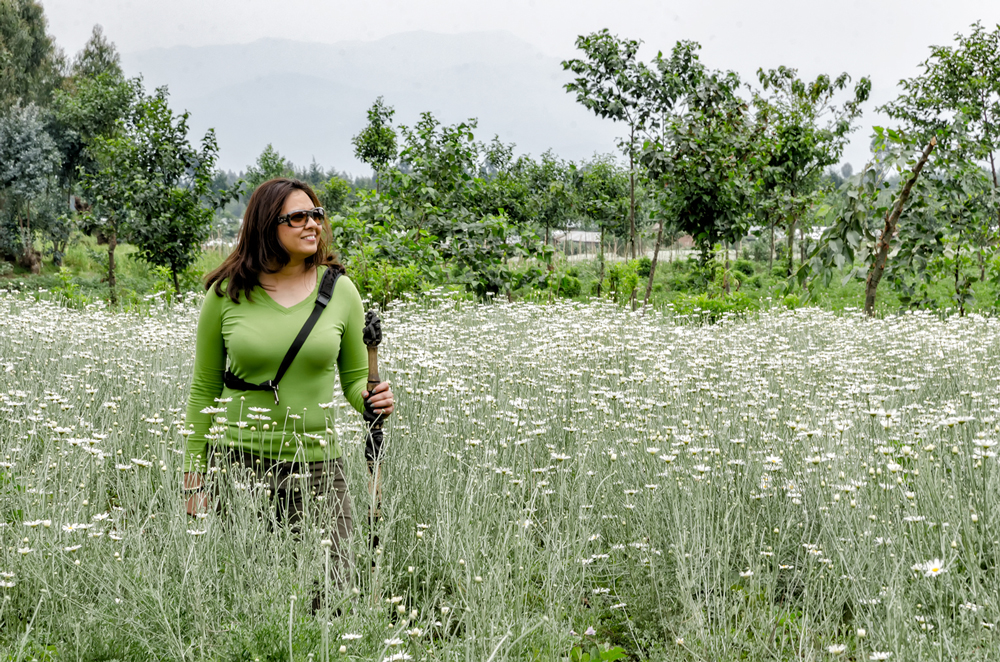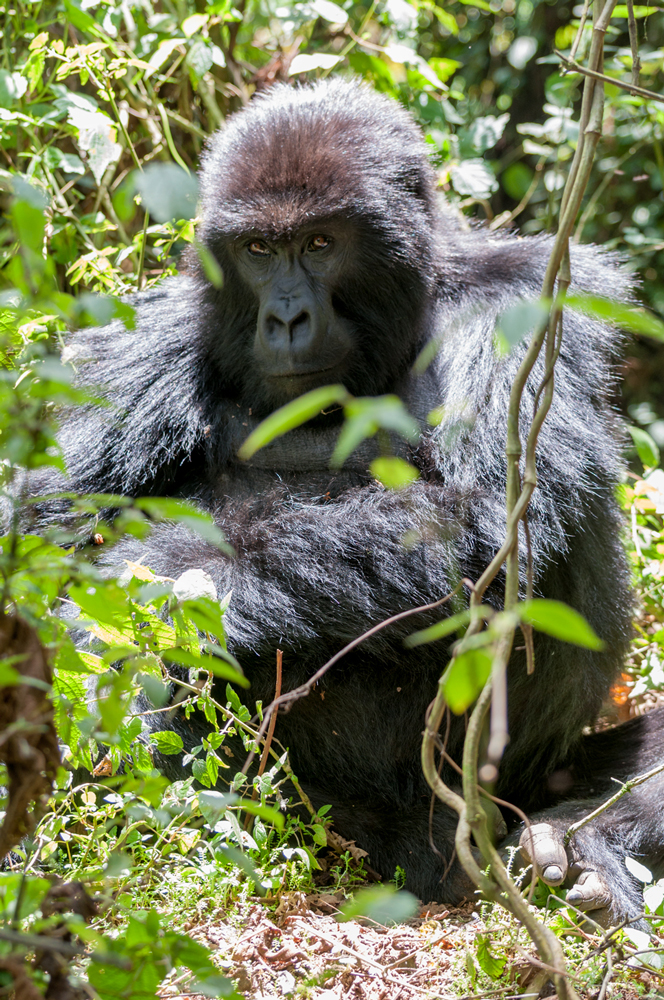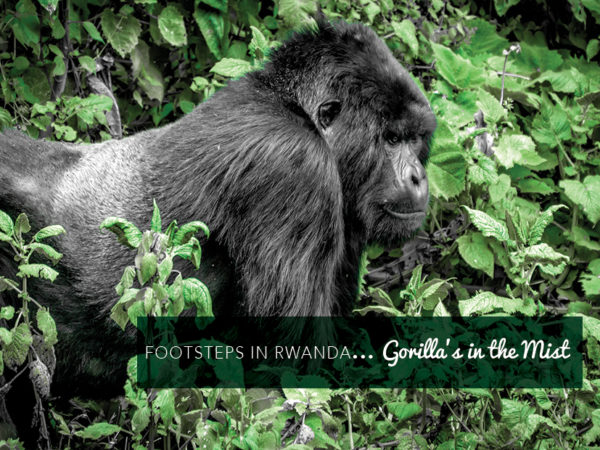As cliché as it sounds, it is a feeling that I can’t put into words to have experienced this adventure and checked it off my Wanderlist! I hope you guys enjoyed my last blogpost about my adventure in the Virungas with the Mountain Gorillas, and that it has got you wanderlusting and wanting to go see these beautiful creatures for yourselves.
I’ve had so many questions on how I organised this trip from Nairobi, and so I thought I would put together a post for you guys on some of the practical aspects of this once in a lifetime trek.
Travel Agent Logistics
I organised my trip directly with Volcanoes Safaris, who have a lodge in Ruhengeri which is about 45 minutes away from the Volcanoes National Park in Kinigi. There are a couple of lodges in the area that you can choose from, and my group ended up choosing Volcanoes Virunga Lodge, which worked well for us. I have a full review of this lodge on TripAdvisor if you want to know more and I would recommend their services although it is important for me to state that I do not have any business or other relationship with this company. The actual cost of the trip will vary depending on your accommodation but the trekking permits cost USD 300 per day for East African Citizens, USD 450 per day for a foreign person resident in East Africa, and USD 750 per day for non- residents. These permits are limited to 80 per day and are sold on a first come, first served basis. All our travel arrangements in Rwanda including obtaining the permits, but excluding international flights, were taken care of us by Volcanoes Safaris.

Volcanoes Safaris

Lakes Bulera and Ruhengeri at Virunga Lodge
Getting to Kigali from Nairobi
Rwandair has a direct flight to Kigali from Nairobi. The flight is about 2 hours long and holding a Kenyan passport, the immigration in Kigali is painless because you don’t need a visa, yay! The officers are amongst the friendliest I have ever come across and they stamp you in with a smile, especially when they hear you are coming to see the Gorillas! There are enough reliable and cost efficient taxis at the airport to take you to your hotel, so you don’t really need to organise a transfer with the hotel (unless you really want to). We stayed at the Serena Kigali which is a 15 minute drive away from the airport. Kigali doesn’t allow any plastic, and so if you have made duty free purchases you will need to discard your plastic bags at the airport!

Flying into Kigali with Rwandair
What to expect the morning of the trek
It is possible to do the trek as a day trip from Kigali, however I would highly recommend staying in the Virunga area the night before, because you need to be at the Volcanoes National Park Headquarters in Kinigi at 7 am. The Headquarters are not where your trek starts but rather where you will be “sized up” by the Rangers based on what they presume are your fitness levels and you will then be put into groups. If you have a specific group in mind, your driver and/or guide can also pass on requests to the Rangers, and you may just get lucky.
While at the Headquarters you can indulge in that last cup of hot tea or coffee (complimentary), use the incredibly fast WiFi and watch the dancers. The loos here are incredibly clean (always a concern, I know, especially with us girls), or hire out some gaiters at USD 5 a pair. Once you have been allocated a group, you are taken by your guide to the specific area of the Headquarters designated for your group, introduced to your team members and your guide, and briefed about your group. On average, 10 groups of 8 people each go trekking daily.
The actual treks start from different points depending on what family you are allocated and what volcano they inhabit. The furthest volcano is Karsimbi and the groups that live on this Volcano take a whole day’s hike to find.

The area where the babies are named in the Kwita Izina ceremony

Traditional Intore Dancers
The Umubano Group
We were allocated the Umubano Group, and what we were told was a “medium” trek. The Umubano Group was once part of the Amohoro Group, but has now split off from them and they both live peacefully together on Mt. Bisoke (also known as Mt. Visoke). The Umubano Group has 13 members. 3 Silverbacks, some Black Backs (young males), juveniles, females and a baby. It took us about 20 minutes to get to the start point of Mt. Bisoke from the Headquarters, and we hired porters here at USD 10 each and were given sturdy walking poles.

Umubano Group

Beautiful and sturdy walking stick
The trek itself
The start of the trek is on the lower mountain slopes, through community farm land, amidst beautiful pyrethrum and potato fields, and is a gentle incline all the way to the boundary wall that separates the mountain from the farm. If you are fit as a fiddle then this will be an easy walk, however if you are not so fit then you will tire easily, but you will still be able to manage it at your own pace. This part of the trek takes about an hour (could be less) depending on the fitness levels of your group.
The hard work begins once you climb over the boundary wall, and start the steep ascent up the slopes of Mt. Bisoke in search of your family. Jerome, our guide gave us a briefing about what to expect once we saw our family, and how to behave amongst them.
On the mountain, you truly appreciate your porters. They take your daypack from you from the start of the trek, but on the mountain they actually help you climb up the steep trail which can be a tough uphill climb! The forest is actually very cool, which helps with the ascent. Lucky for us, we didn’t trek very long before the group was spotted in the valley, and so we had to descend down a very steep slope (so steep that I actually sat down and pushed myself) to the starting point of tracking the Gorillas. Once you are close to the family, you leave all your stuff (except your camera) with the porters, and start to go through thick foliage that the rangers cut away for you so that you can go to the area where your family is hanging out. The porters somehow know where the trek will end and will take your stuff and wait for you at that point – I guess the rangers communicate with them, because your trek will in most cases, not end where it started from.

Amidst the white pyrethrum fields
My personal experience
You can read more about my adventure in my blogpost: Footsteps in Rwanda…tracking the Gorilla’s in the Mist, but in a nutshell, the largest Silverback was having a snooze when we arrived, the females were eating, and lounging in a canopy, and the other 2 Silverbacks and black backs were lazing around in various places. The baby was swinging from branch to branch and just having fun. The sight is overwhelming, and I had mixed feelings – excitement, anxiety and awe all in one. As I mentioned, the recommended distance is 7 metres, however the Gorillas don’t know any better and will constantly breach this but Jerome was absolutely fantastic and made sounds that comforted the Gorillas and told us what to do every step of the way. Jerome was so brilliant that we tracked all 13 members, being scattered around the vicinity. One of the black backs did get a bit aggressive (not with any of the group members) but for some reason or the other, and he pummelled the earth which was quite exciting as we were a safe distance from him and had the rangers on hand. An hour I think, is just enough time to spend with them because at some point, my feeling was that the Gorillas started to feel like you were invading their space and started moving away from us, deeper into the valley.
The terrain is perhaps what makes the trek tough. You are deep in the jungle with vines and roots intertwined on the earth floor, and stinging nettles everywhere. Once you spot your family you are off any kind of trail and rely solely on the trackers and your guide for direction. Our descent deep into the valley to get out of Mt. Bisoke was perhaps the most exciting part of the trek – cutting through the thick forest to get to the end of the trek was both mentally and physically gruelling, but also exhilarating! I am glad it didn’t rain because I do not think I would have managed this in the rain. It was tough with dry terrain, and wet terrain would have definitely taken the charm away from the experience!

Peekaboo!

“I’m watching you!”
Some things to consider:
1. If you have a cold or a flu, you may not be able to go on the hike as Gorillas are highly susceptible to human diseases;
2. Once you are around your Gorilla Family, you need to keep a distance of 7 meters from them. They however, can breach this and if they do then you stay still until the Gorilla moves on and if it is the Silverback then you kowtow until he moves away from you;
3. You cannot eat or drink anything around the Gorillas;
4. Flash photography is discouraged.

Trackers and Rangers that do one heck of a job out here in the Virungas!
My top tips:
1. Eat a hearty dinner the night before, because if you are anything like me and don’t usually eat very much until later in the day, you may not be able to eat very much at breakfast (which for us was 5:30 am) and you need the energy for the trek;
2. Definitely get a good pair of gardening gloves. No matter what anyone says, you will need them to push past the stinging nettles once you are off the trail and tracking your family.
3. Wear long sleeve tshirts (not too thick) and thick pants to protect yourself from the stinging nettles.
4. Invest in a good pair of hiking shoes. The terrain can be unforgiving and you need something with good grip – I wore Merrels which worked perfectly.
5. Spray yourself liberally with a strong insect repellent before getting into the jungle, as you will not be allowed to do this once you are on the trek.
6. The gaiters are well worth it to protect your shins from the nettles and the red ants from climbing into your pants. They can be hired from the Park Headquarters for USD5. Your guide will return them to the Headquarters for you once you are done with the trek.
7. If you know the family you want to visit, then speak to your driver who will pass on your request to the rangers.
8. Get yourself a Porter. They are worth their weight in gold – in helping you carry your stuff, helping you on the trek with the steep ascents and you are giving back to the community by giving someone a job for the day. They cost USD 10 a porter but I would also give them a tip at your discretion.
9. Finally, at some point, put away the camera and observe the Gorillas in their surroundings, and actually take in where you are. I can’t help but get philosophical here and say that you do begin to appreciate nature being deep in the heart of the jungle on an ancient volcano! An hour will be up before you know it and you don’t want to have spent the entire time behind the lens!
I really do hope that this post has been useful. Please feel free to comment and share, and as always, happy wanderlusting from me!

Charles the majestic Silverback….he really does command respect!










